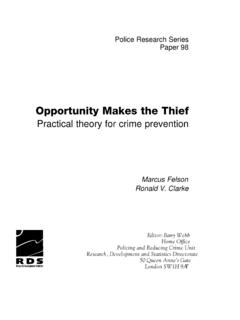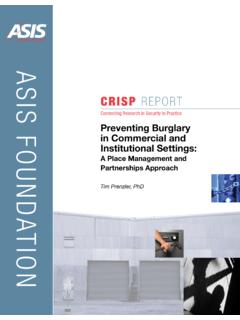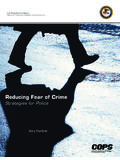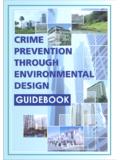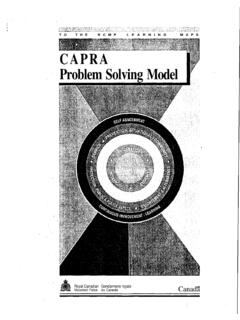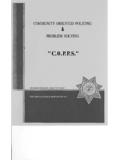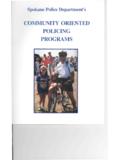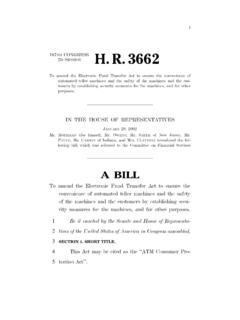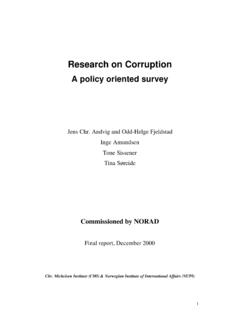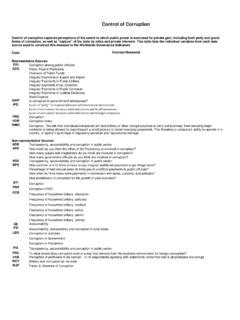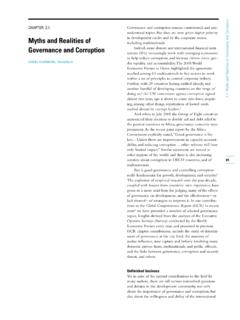Transcription of Understanding and preventing police corruption: …
1 police research Series Paper 110 Understanding and preventingpolice corruption :lessons from the literatureTim NewburnEditor: Barry WebbHome OfficePolicing and Reducing Crime UnitResearch, Development and Statistics Directorate50 Queen Anne s GateLondon SW1H 9 ATCrown Copyright 1999 First Published 1999 Policing and Reducing Crime Unit: police research SeriesThe Policing and Reducing Crime Unit (PRC Unit) was formed in 1998 as a resultof the merger of the police research Group (PRG) and the research and StatisticsDirectorate. The PRC Unit is now one part of the research , Development andStatistics Directorate of the Home Office. The PRC Unit carries out andcommissions research in the social and management sciences on policing and crime reduction, broadening the role that PRG PRC Unit has now combined PRG s two main series into the police R e s e a rch Series, containing PRG s earlier work.
2 This series will present re s e a rc hmaterial on crime prevention and detection as well as police management ando rganisation issues. research commissioned by PRG will appear as a PRC Unit publication. Throughout the text there may be references to PRG and these now need to beunderstood as relating to the PRC 1-84082-82-2600 Copies of this publication can be made available in formats accessible tothe visually impaired on request.(ii)CForewordT h roughout the 1960 s and 1970 s discussion of the police Service and policing inthe United Kingdom was punctuated with examples of malpractice andmisconduct. Twenty years on, several high profile scandals involving officers at allranks of the police service in a number of forces, have again placed the polices e rvice, and discussion of police corruption in part i c u l a r, under the official andpublic spotlight.
3 The police Service has taken an active and leading role in tackling police corruption and in putting in place strategies to detect, investigate and eliminatecorruption within its ranks. The Association of Chief police Officers Taskforce onCorruption, established in September 1998, has taken the lead at a national level;individual forces, most notably the Metropolitan police Service are putting in placepreventive strategies more robust than those previously introduced in the UnitedKingdom; and, Her Majesty s Inspectorate of Constabulary has completed aThematic Inspection on Integrity within the police publication contributes to the debate by providing a review of the publishedEnglish language literature on corruption . By its very nature a literature review ishistorical. It is hoped that in identifying key lessons drawn from the experiences ofpolice organisations in various jurisdictions, this report will inform the verysubstantial work now underway in the police Service.
4 The study should prove a useful addition to our knowledge in this sensitive Gloria LaycockHead of Policing and Reducing Crime UnitResearch, Development and Statistics DirectorateHome OfficeJune 1999(iii)AcknowledgementsI am hugely grateful to the following for their very generous advice and guidance:Ben Bowling (Cambridge), Cyrille Fijnaut (Leuven), Janet Foster (Cambridge),G a reth Newham (Braamfontein), Clive Norris (Hull), Maurice Punch ( A m s t e rdam), Eli Silverman (New York), Phillip Stenning (To ronto), Richard Wa rdand Timothy Stone (Chicago), and especially to David Dixon (New South Wa l e s ) .Tracking down what was often almost untraceable literature could not have beendone in the time available without the invaluable support of Karola Winter atGoldsmiths. In addition, the libraries at the Institute of Criminology, Cambridge, the Home Office, the London School of Economics and the JFK School ofGovernment, Harvard provided considerable support at short are also due to the staff of the police and Reducing Crime Unit, especially to Jacquie Russell for all her help and AuthorTim Newburn is the Joseph Rowntree Foundation Professor of Urban Social Policyat Goldsmiths College, University of would like to thank David Dixon, Associate Professor, Faculty of Law of theUniversity of New South Wales for acting as independent assessor for this report.
5 (iv)Executive summaryA series of public scandals over the past few years, albeit apparently involving asmall number of officers, has caused concern about the standard of ethics andintegrity within the police Service. In response, the Association of Chief police Officers has illustrated its commitmentto take the issues of corruption within the service seriously with the establishment of a Presidential Taskforce. Individual forces, most notably the Metropolitan PoliceService, are taking steps to tackle corruption within their ranks. Her Majesty sInspectorate of Constabulary have undertaken a Thematic Inspection on in these activities, there was a recognised need to pull together the centrallessons from previous efforts to tackle corruption , both here in the United Kingdomand also in other jurisdictions.
6 In recognition of this demand, the Home OfficePolicing and Reducing Crime Unit commissioned this work aims to provide a common level of knowledge and Understanding ofpolice integrity and corruption , its causes and the efficacy of strategies for itsprevention. Other issues of relevance include the links between integrity (and lapses in it) and the development of corruption , and strategies for instillingorganisational values and integrity in staff. It is not an aim of this report to providean assessment of the current extent or nature of police corruption in the UnitedKingdom. It is hoped this work will provide an essential base for the development of robust prevention strategies in the longer term. By definition, a literature review is necessarily historical and shaped by availablematerial. The review covers the main English language literature on the issues ofpolice corruption and police ethics over the past 20 years.
7 It includes thesociological and criminological literature, together with a review of the main official inquiries from the United States and Australia. Key findingsThe review concludes with eleven key messages central to any Understanding ofcorruption and which should underpin reforms introduced for its prevention: lpolice corruption is pervasive, continuing and not bounded by rank;lany definition of corruption should cover both financial and process corruption , and should acknowledge the varying means, ends and motives ofcorrupt activities;(v)lthe boundary between corrupt and non-corrupt activities is difficult to define,primarily because this is at heart an ethical problem;lpolice corruption cannot simply be explained as the product of a few bad apples ;lthe causes of corruption include: factors that are intrinsic to policing as a job;the nature of police organisations; the nature of police culture.
8 The opportunities for corruption presented by the political and task environments;and, the nature and extent of the effort put in to controlling corruption ;lsome areas of policing are more prone to corruption than others;lalthough there are many barriers to successful corruption control, there isevidence that police agencies can be reformed;lreform needs to go beyond the immediately identified problem;lreform must look at the political and task environments as well as theorganisation itself;lreform tends not to be durable; andlcontinued vigilance and scepticism is vital.(vi)(vii)ContentsPageForeword(iii) Acknowledgements(iv)Executive summary(v)List of figures(viii) in various jurisdictions1 Aim and methodology2 The is police corruption ?4 Corrupt activities4 The problem of definition5A question of ethics?
9 8 The slippery slope to becoming bent causes of police corruption14A few bad apples?14 The causes of corruption16 Drug-related police control28 Human resource management28 Anti- corruption policies31 Internal controls32 The external environment and external controls39 Possible unintended consequences of corruption : Toward ethical policing 45 References50 Recent police research Group and Policing and Reducing 56 Crime Unit Publications(viii)List of figuresF i g u re and dimensions of police corruption42 Arguments supporting and opposing the acceptance10of gratuities and benefits3 Resolving the Dirty Harry Problem 114 Causal factors affecting the development of corrupt 17practices1. IntroductionCorruption in the police service in the United Kingdom has come under increasingpublic and official scrutiny in the past 12 months.
10 A series of public scandals, albeitapparently involving a small number of officers, has caused concern about thestandard of ethics and integrity within the police service. In response, the policeservice is putting in place a range of short and longer term reforms to tacklemalpractice and misconduct within its in various jurisdictionsUnited KingdomFrom the earliest days of the Bow Street Runners; through the formation of the New police in the 1820 s; to the scandals in the 1960 s and 1970 s policing in theUnited Kingdom has been punctuated with examples of malpractice andmisconduct. The range of corrupt activities uncovered included the concealment ofserious crimes, bribery, the fabrication and planting of evidence. Modern dayscandals of the sort characterised in the nation s consciousness by the BirminghamSix, the Guildford Four, the Carl Bridgewater affair, and the activities of the WestMidlands Serious Crime Squad have involved the suppression of evidence, thebeating of suspects, tampering with confessional evidence and perjury.

